Search Images
Browse Content (p. 685)
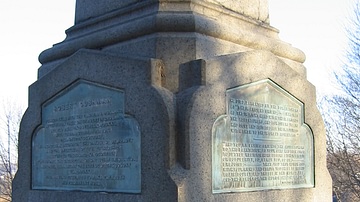
Image
Cushman Monument
Monument to Robert Cushman at Burial Hill, Plymouth, Massachusetts. It reads: Fellow exile with the Pilgrims in Holland, Afterwards their chief agent in England, Arrived here IX November, MDCXXI, With Thomas Cushman his son: Preached...

Image
Derrynaflan Chalice - Base
Base of the Derrynaflan Chalice, 9th century CE.
Found on the island of Derrynaflan, in the townland of Lurgoe, Co. Tipperary, Ireland in 1980 CE.
Height: 19.2 cm (7.6 in)
Diameter: 21 cm (8.3 in)

Image
Timeline of Ancient Egypt
A timeline showing all the key periods in ancient Egyptian history: - Old Kingdom (2613-2181 BCE) - First Intermediate Period (2181-2040 BCE) - Middle Kingdom (2040-1782 BCE) - Second Intermediate Period (1782-1570 BCE) - New Kingdom...
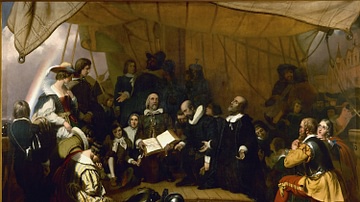
Image
Embarkation of the Pilgrims
Protestant pilgrims on the deck of the ship Speedwell before their departure from Delfthaven, the Netherlands in 1620 CE. had studied art in Italy and taught art at the military academy at West Point. Oil on canvas 548 x 365 cm (18 x 12...

Image
Portrait of Hans Holbein the Younger
A c. 1543 CE self-portrait by the German Renaissance painter Hans Holbein the Younger (c. 1497-1543 CE). (Uffizi Gallery, Florence)
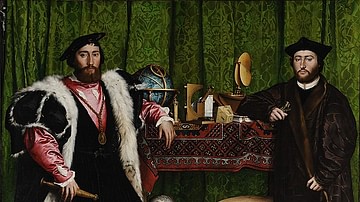
Image
The Ambassadors by Hans Holbein the Younger
The Ambassadors by Hans Holbein the Younger, c. 1533 CE. The skull in the foreground is an example of anamorphosis - distorting an image so that it can only be seen clearly from one angle. (National Gallery, London)
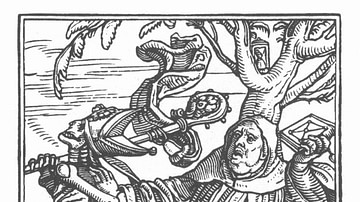
Image
Dance of Death by Hans Holbein the Younger
A scene showing an Abbot and Death from the Dance of Death series of woodprints by Hans Holbein the Younger (c. 1497-1543 CE). c. 1525 CE.
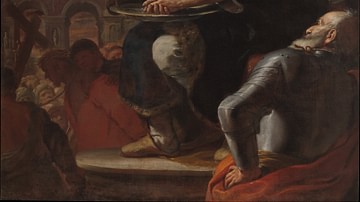
Image
Pilate Washing His Hands
Pilate Washing His Hands by Mattia Preti (Il Cavalier Calabrese)(Italian, Taverna 1613–1699 CE Valletta), 1663 CE. According to the Gospel of Matthew, the Roman governor Pontius Pilate tried to save Christ from death and symbolically washed...
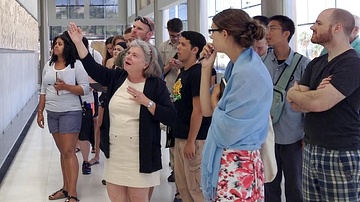
Image
Jenifer Neils
Jenifer Neils, Director of the American School of Classical Studies in Athens.

Image
Eric Driscoll
Assistant Director at the American School For Classical Studies in Athens.